
Washington Trust to pay $9 million over discriminatory lending
By Sarah N. Lynch (Reuters) -Washington Trust Bank, the largest community bank in the country, will pay $9 million to
2023-09-28 00:22
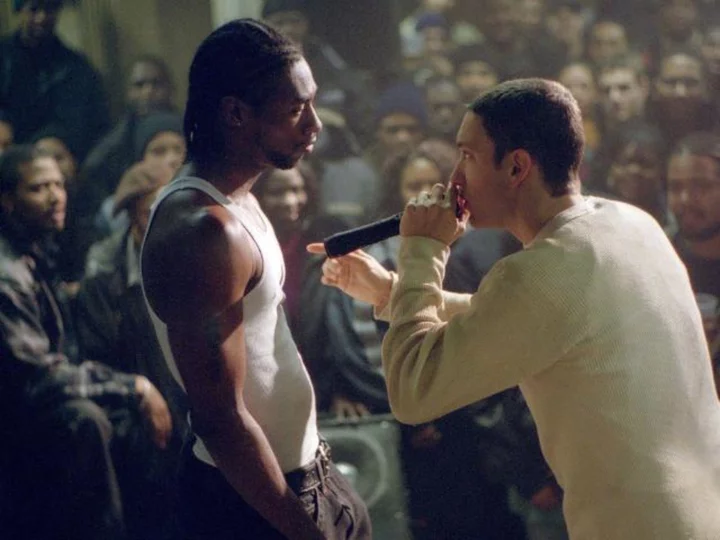
'8 Mile' actor Nashawn Breedlove dead at 46
Rapper Nashawn Breedlove, best known for appearing in a rap battle against Eminem in the 2002 movie "8 Mile," has died at age 46.
2023-09-27 17:21
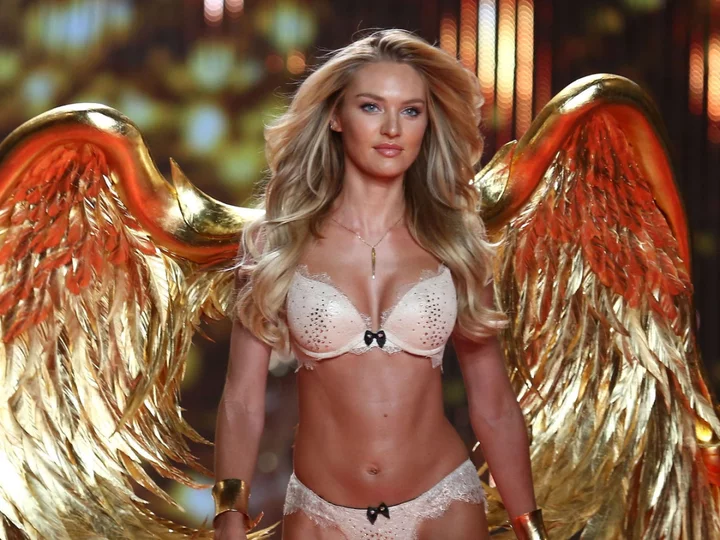
Victoria’s Secret was never feminist – why are they bothering to try now?
Wings! Fake tans! Low body mass indexes! For millennial women, the Victoria’s Secret Fashion Show was an annual reminder of the myriad ways in which we were failing to adhere to exacting and exhausting beauty standards. When it was cancelled in 2019, few mourned it. But fashion loves a comeback story, and today the company unveiled Victoria’s Secret: The Tour ’23 on Amazon Prime Video, its first televised catwalk event in five years. According to the company, the feature-length film is the “ultimate expression” of their ongoing efforts to rehabilitate a brand that has been mired in scandal. Alongside long-standing criticisms over promoting an unrealistic body image, the company’s former marketing executive Ed Razek was also accused of behaving inappropriately with models in a New York Times report (he described the allegations as “categorically untrue, misconstrued or taken out of context”) and a recent Hulu documentary Angels and Demons explored troubling links with convicted sex offender Jeffrey Epstein. “Visually, strategically, everything about it is the incarnation of where the brand is going,” Victoria’s Secret president Greg Unis has said. Instead of the usual structure, which was centred around a straightforward runway show, The Tour ’23 is roughly divided into quarters, each focusing on one of four locations: Lagos, Nigeria; Bogota, Colombia; Tokyo, Japan; London, the UK. In each city, a local designer has dreamed up their own fashion collection to be modelled by the likes of Naomi Campbell, Emily Ratajkowski, Adut Akech, and Gigi Hadid, who does double duty as the show’s narrator. In London, the chosen designer is Michaela Stark, whose corsets aim to celebrate a diverse range of body shapes, rather than constrict them. She agreed to take part in the VS show 2.0, she suggests, so that she could counteract the damaging messages put out by the original runways. “It was a big thing” when she was a teenager, she recalls, “but it was also that culture around it, of not wanting to eat after you saw it”. Her comments inadvertently raise a question that looms over the whole production: can you ever truly detoxify a brand practically built on the insecurities of a generation of women? Founded by Roy Raymond in the late Seventies, who felt awkward buying lingerie for his wife in his local department store, Victoria’s Secret began life as a women’s underwear shop aimed specifically at men. In 1982, Raymond sold the business to Limited Stores founder Les Wexner for $1m; Wexner went on to transform the brand, envisaging it as a more affordable version of the fancy European label La Perla. In 1995, when the company was facing competition from Wonderbra, the first Victoria’s Secret Fashion Show took place at the Plaza Hotel in New York City. It proved successful enough to become an annual event. In 1999, the show was streamed on the internet for the first time, prompting the website to crash as 1.5 million users tried to tune in. Two years later, the VS show celebrated its inaugural TV broadcast, during which the National Organisation for Women (NOW) protested outside a New York branch of the shop. “Some people are terribly blase about this, that this is not a big deal, that we ought to be used to this kind of daily sexuality,” Sonia Ossorio, NOW’s vice president for public information, said at the time. “But I think we need to keep questioning the ever-extending sexualisation of women in mass media.” The following year, NOW branded the event a “softcore porn infomercial”. By then, the blueprint for future VS shows had been set. A lineup of models would don bras encrusted with millions of pounds worth of jewels and embarrassingly themed lingerie (never forget Cara Delevingne’s god-awful outfit circa 2013: a sort of miniature shell suit likely pitched in the boardroom as “sexy football fan”). Somewhere between the models, a famous singer would pop in for a brief performance; if they were a woman, they’d be decked out in a VS creation of their own (Taylor Swift got a particularly raw deal in 2013, too, when she had to wear a Union Jack-inspired number, complete with a tiny red, white and blue top hat). This glittering, over-the-top spectacle, much closer to a beauty pageant than a Fashion Week presentation, spotlighted the world’s most beautiful women – who were not just genetically blessed but worked hard, too, we were told ad nauseam. They had been preparing for the show like endurance athletes, sticking to carefully tailored diets and intense workout schedules. These wing-wearing “Angels” were selling a dream, one that we lesser mortals could supposedly buy into by picking up some synthetic underwear at our nearest Victoria’s Secret branch. But it was their painstaking fitness regimens, not the pants they were wearing, that were the real focus of fascination. In endless interviews, the models were asked to detail exactly how they whittled themselves down to “Victoria’s Secret ready” size – so that we could try and copy them. To combat the criticisms of objectification, the brand relied on its models to pay lip service to just how “empowering” the whole circus was, offering up their take on choice feminism. “There’s something really powerful about a woman who owns her sexuality and is in charge” – model Karlie Kloss was peddling this line to the media as late as 2018. “A show like this celebrates that and allows all of us to be the best versions of ourselves. Whether it’s wearing heels, make-up or a beautiful piece of lingerie – if you are in control and empowered by yourself, it’s sexy.” Naturally, it was very convenient that this “best version of ourselves” aligned with the oppressively narrow conventional standard of sexiness Victoria’s Secret was selling. By the late 2010s, though, as the fashion industry began to (slowly) address its diversity problem, Victoria’s Secret started to seem more and more like an anachronism. As other brands took small steps to spotlight plus-size models on their catwalks and in their advertising campaigns, the VS show remained the preserve of the extremely thin. They had been preparing for the show like endurance athletes, sticking to carefully tailored diets and intense workout schedules Placing white models in culturally insensitive outfits (see: Kloss walking down the runway wearing a Native American-inspired headdress) only added to the glaring PR problem, which was later exacerbated when the brand’s marketing boss Ed Razek made controversial comments about transgender people and plus-size models to Vogue in 2018. “It’s like, why doesn’t your show do this? Shouldn’t you have transsexuals in your show?” he said, apparently recalling questions from critics. “No. No, I don’t think we should. Well, why not? Because the show is a fantasy.” Elsewhere, he claimed “no one had any interest” in seeing bigger bodies on the VS catwalk. Razek later apologised, admitting that his “remark regarding the inclusion of transgender models in the Victoria’s Secret Fashion Show came across as insensitive”. His comments about plus-size bodies went unaddressed. In 2019, against a backdrop of plummeting TV ratings and declining sales, the brand confirmed that the VS show had been cancelled; instead, they said, the company would focus on “evolving” their marketing. The news came just a few months after the revelation that Jeffrey Epstein had provided financial advice to Victoria’s Secret founder Wexner – and had exploited his personal connection to the brand as a means to lure in young women. “Being taken advantage of by someone who was so sick, so cunning, so depraved, is something that I’m embarrassed I was even close to,” Wexner said to investors. “But that is in the past.” He left the company the following year. Since then, Victoria’s Secret has made some high-profile attempts to rectify past missteps. The company brought in a majority female board of directors; they ditched the “Angels” concept in favour of the new “VS Collective” whose ranks include actor Priyanka Chopra, US football star Megan Rapinoe, and plus-size model Paloma Elsesser. Last year, an ad campaign featuring a more diverse array of women was accompanied by the slogan “we’ve changed” – supposedly into something “ever-evolving” and “real”. How much has Victoria’s Secret “changed”, really? The latest show features a handful of plus-size models, Elsesser included, but many of the old VS cohort are present and correct, including Candice Swanepoel, Lily Aldridge, and Adriana Lima. The nods to body diversity can’t help but feel a bit cursory when the overriding vision is still one of impossibly thin women parading up and down a runway – albeit a runway that now snakes around a Brutalist building in Barcelona as opposed to a swanky New York City hotel. The outfits too, are more arty, less skimpy this time around and mercifully there hasn’t been the usual media battery of stories on extreme exercise and diet in the run-up – but that doesn’t mean those practices have ended altogether. “We haven’t forgotten our past, but we’re also speaking to the present,” the brand’s chief creative director Raul Martinez said before the film’s launch. In an era when more inclusive, dynamic lingerie labels, like Rihanna’s Savage x Fenty, reign supreme, the VS show can’t help but seem like a relic. And as long as its legacy of impossible body standards lives on for many of us, any attempts to dress the spectacle up as empowering feel very hollow indeed. Read More Naomi Campbell and Gigi Hadid lead first Victoria’s Secret runway show in five years Victoria's Secret overhauls its racy fashion catwalk in its latest moves to be more inclusive Chioma Nnadi at Vogue: All hail the era of the Black female fashion editor Naomi Campbell and Gigi Hadid lead first Victoria’s Secret runway show in five years Kim Kardashian debuts buzz cut and thin eyebrows for new photo shoot Travis Kelce wears ‘1989’ inspired outfit after leaving NFL game with Taylor Swift
2023-09-27 13:48
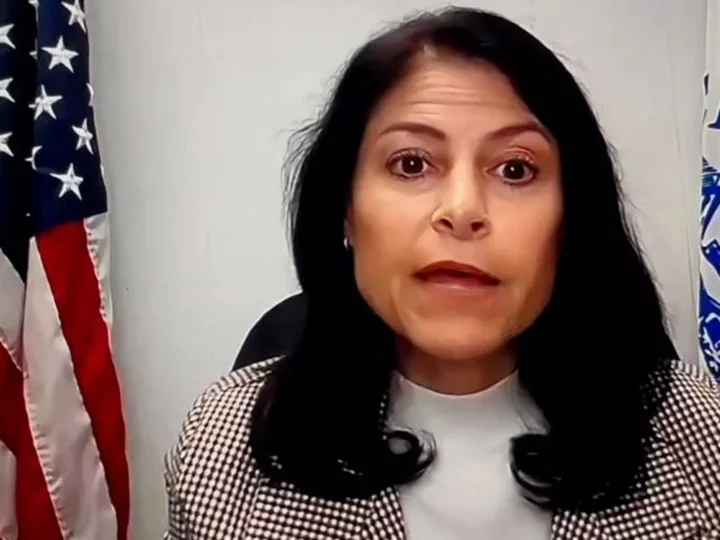
2 Michigan fake electors ask judge to drop charges, citing state AG's claim they're 'brainwashed'
Two fake GOP electors in Michigan asked a judge this week to dismiss their charges, arguing that state Attorney General Dana Nessel conceded that they didn't have criminal intent when she said they were "brainwashed" after the 2020 election.
2023-09-27 09:50
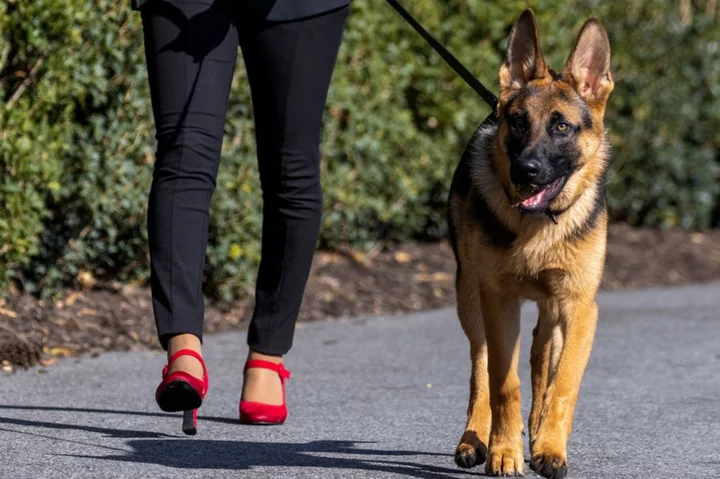
Biden dog Commander bites another Secret Service agent
This is the 11th time Commander has bitten a guard at the White House or the Biden family home.
2023-09-27 07:24

Speaker Kevin McCarthy reaches a crossroads as shutdown looms
With less than five days to go before a government shutdown, Speaker McCarthy has a choice to make.
2023-09-27 03:19

Mike Ashley’s Frasers Group ‘in talks to sell its Missguided clothing brand to Shein’
After buying Missguided for £20 million last year, Mike Ashley’s Frasers Group is reportedly in talks to offload the brand to online retailer Shein.
2023-09-26 22:51

Kourtney Kardashian announces imminent arrival of her new collection with Boohoo
Kourtney Kardashian has a second line coming to Boohoo later this week.
2023-09-26 22:23
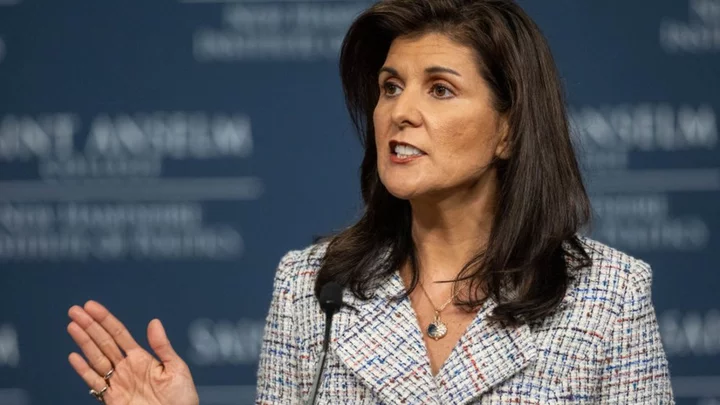
Second Republican debate: When is it and what to expect
Seven candidates will battle it out in California, with frontrunner Donald Trump absent again.
2023-09-26 21:46
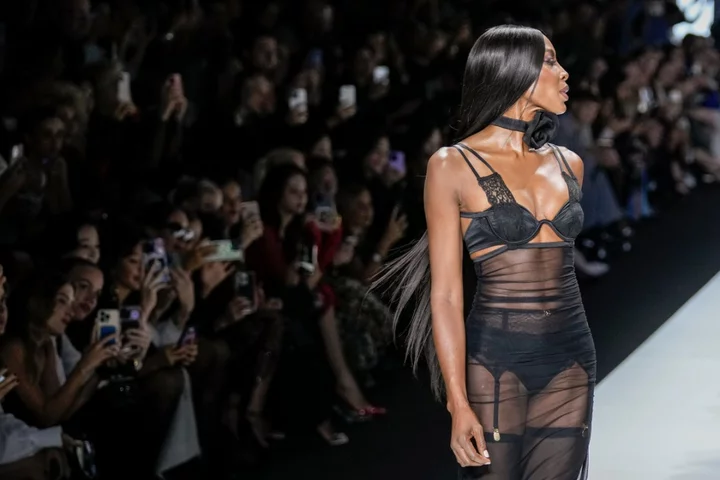
Naomi Campbell and Gigi Hadid lead first Victoria’s Secret runway show in five years
Naomi Campbell, Gigi Hadid and Emily Ratajkowski stormed the runway as the Victoria’s Secret fashion show returned for the first time in five years. On Monday (25 September), the lingerie company broadcast Victoria’s Secret: The Tour ‘23 on Prime Video. Part fashion show, part documentary, it marked the brand’s first televised catwalk show since 2018. It also follows a major rebrand for Victoria’s Secret, after the company was accused of promoting unrealistic body image and failing to protect its models against sexual misconduct. The Tour ‘23 – described as a “reimagined fashion show with a new generation of women from around the world” – is narrated by Hadid, who also appears on the catwalk. Doja Cat provides the musical accompaniment for the show. The feature-length film began with a black screen, before a statement said: “In 2021, Victoria’s Secret began a journey. The goal was to give a new generation of creatives from around the world the opportunity to tell their stories and see their creations brought to life on the world stage. The platform? The VS Show.’ Hadid then appeared barefoot in a nude tasselled dress, walking alongside other models around Barcelona. Campbell, meanwhile, donned a black leather trouser suit and corset-style top as she stood beside Hadid. In a later clip, Hadid was shown in a gold jewelled bustier and matching shorts, teasing in the voiceover: “I mean, come on. We had to bring back a little of the old show.” Also taking part in the show were Hailey Bieber and Emily Ratajkowski, who wore a crystal-encrusted strapless top and a crocheted bikini, respectively. Julia Fox, meanwhile, showed off a vibrant yellow dress, while Winnie Harlow appeared in a gold sequin crocheted outfit. Also modelling the collection were Amelia Hamlin, Abby Champion, and Ziwe Fumudoh. Several former Victoria’s Secret Angels, including Candice Swanepoel, Adriana Lima and Lily Aldridge, also returned for the fashion show. Following criticism, Victoria’s Secret got rid of its team of Angels in 2021. Over the years, Tyra Banks, Rosie Huntington-Whitley, Chanel Iman, Heidi Klum, and Lily Aldridge were all part of the group. The Angels were replaced by the VS Collective, a group of seven successful women. The group now includes models Adut Akech, Paloma Elsesser and Valentina Sampaio, as well as journalist Amanda de Cadenet, athlete Eileen Gu, footballer Megan Rapinoe, and actor Priyanka Chopra Jones. Members of the VS Collective and some classic Angels, as well as models Campbell and Gisele Bundchen, recently appeared in the brand’s Icons campaign. Last year, the brand faced further criticism after it was the subject of Hulu documentary series Victoria’s Secret: Angels and Demons. The documentary delved into the brand’s “misogynistic culture” under former chief marketing officer Ed Razek, who had previously been accused of multiple incidents of inappropriate contact with models. Razek previously denied the allegations, calling them “categorically untrue, misconstrued or taken out of context”. Read More Naomi Campbell wears black lingerie on Dolce and Gabbana catwalk Cindy Crawford reflects on ‘traumatising’ haircut in her early career Fans convinced that Linda Evangelista and Naomi Campbell are ‘feuding’ after Instagram snub Kim Kardashian unveils ‘iconic’ new look for magazine cover Travis Kelce wears ‘1989’ inspired outfit after leaving NFL game with Taylor Swift See Cate Blanchett champion sustainable fashion at glamorous Giorgio Armani show
2023-09-26 18:25
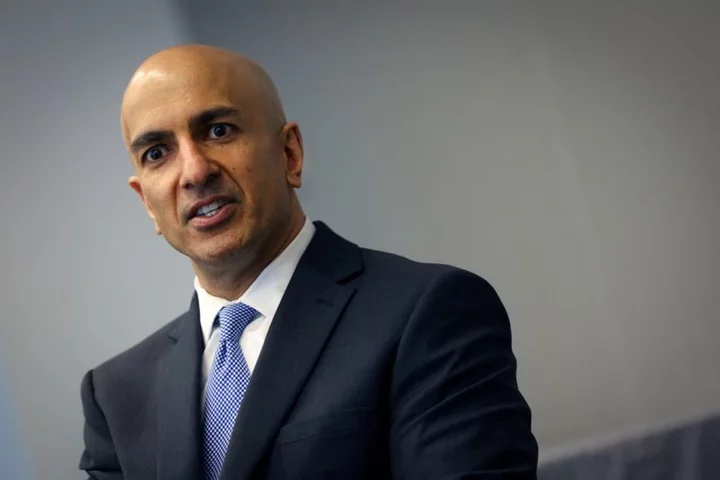
Fed's Kashkari sees one more rate hike this year
Minneapolis Federal Reserve Bank President Neel Kashkari on Monday said that given the surprising resilience in the U.S.
2023-09-26 09:50

College football rankings: Top 25 teams re-ranked by quarterback rating
What would the college football rankings look like if the AP Top 25 was reordered by passer rating? Which quarterbacks are doing the most in 2023?
2023-09-26 06:50
